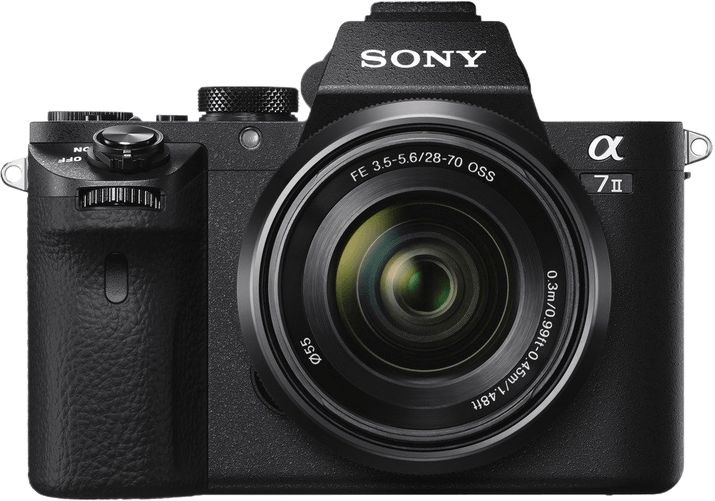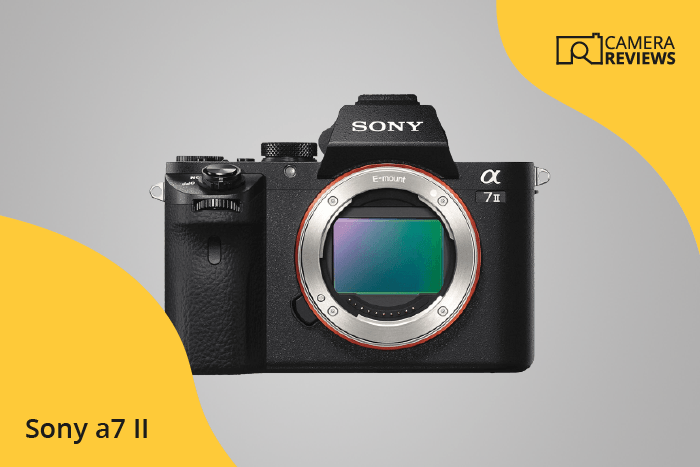Sony a7 II Specs and Scores

The Sony a7 II mirrorless camera scores a solid 68/100. Announced in November 2014 and released the same year, this camera initially retailed for $1600. Measuring 127 x 96 x 60mm and weighing 599g (1.32lbs), the a7 II offers a compact and lightweight design. As a camera from 2014, it still holds up decently in today’s market, providing good value for photographers seeking a balance between performance and affordability.
Sony a7 II Overview and Optics
The optics of the Sony a7 II receive a score of 78/100. This camera features a 24.2-megapixel CMOS sensor and a Bionz X processor, with a DXOMARK score of 90 for the sensor. The full-frame sensor size, Sony E lens mount, and 3:2 aspect ratio contribute to its performance. The camera has a shooting speed of 5 frames per second and includes image stabilization.
In the current market, the Sony a7 II holds its own with these specifications. The 24.2-megapixel sensor provides high-resolution images, while the full-frame sensor size allows for better low-light performance and a shallower depth of field. The Bionz X processor ensures fast image processing, and the image stabilization helps reduce camera shake for sharper images.
The Sony a7 II’s optics prove to be reliable and competitive in today’s market. With its combination of features and performance, this camera remains a solid choice for photographers looking for quality and versatility in their gear.
Sony a7 II Video Performance
The Sony a7 II receives a video score of 56/100. This camera offers Full HD video resolution with maximum dimensions of 1920 x 1080 and a frame rate of 60fps. However, it does not include built-in time-lapse functionality.
Comparing the video capabilities of the Sony a7 II to other cameras in today’s market, it falls short in terms of resolution and features. Many competitors now offer 4K video resolution and built-in time-lapse options, making them more versatile for videography.
The Sony a7 II remains a solid choice for photographers primarily focused on still images, but its video capabilities are not as advanced as other options currently available. Users seeking high-quality video performance may want to explore alternative cameras with more robust video features.
Sony a7 II Features and Benefits
The Sony a7 II scores 57/100 in the features category. With a 3-inch screen and a resolution of 1,230,000 dots, the display provides clear image previews and menu navigation. However, the lack of a touchscreen limits the camera’s user-friendliness. The flip screen adds versatility for shooting from various angles, but the absence of GPS and Bluetooth connectivity restricts location tracking and seamless device pairing.
Despite these limitations, the Sony a7 II includes WIFI capabilities, enabling wireless image transfer and remote control. As a result, it maintains some relevance in today’s market, where connectivity and convenience are highly valued.
Taking all these features into account, the Sony a7 II offers a decent set of specifications, but it falls short in some areas compared to newer camera models. Its score of 57/100 reflects its standing in the current market, making it a suitable option for those who prioritize certain features like WIFI and a flip screen, but not a top choice for those seeking the latest technology.
Sony a7 II Storage and Battery
The Sony a7 II scores 35/100 in the storage and battery department. It has a single memory card slot, accepting SD, SDHC, SDXC, Memory Stick Duo, Pro Duo, and Pro-HG Duo cards. The battery life amounts to 350 shots, powered by an NP-FW50 battery. The camera has USB charging capabilities which is useful.
Compared to other cameras in today’s market, the storage and battery features of the Sony a7 II are not exceptional. The single memory card slot and limited battery life of 350 shots might not satisfy the needs of professional photographers or avid enthusiasts who require longer shooting sessions and backup storage options.
Sony a7 II Alternatives
Do you want to know how the Sony a7 II compares to its competitors? Have a look at the most popular comparisons for this camera below:
- Sony a6400 vs a7 II
- Sony a7 II vs a7 III
- Canon EOS RP vs Sony a7 II
- Canon EOS 6D vs Sony a7 II
- Canon EOS R10 vs Sony a7 II
- Sony a7 II vs a7S II
Sony a7 II FAQ
Does the Sony a7 II Have Built-in Image Stabilization?
Yes, the Sony a7 II features a 5-axis in-body image stabilization system which helps to reduce camera shake and improve image sharpness in various shooting conditions.
Does the Sony a7 II Support 4K Video Recording?
No, the Sony a7 II does not support 4K video recording. The maximum video resolution it offers is Full HD 1080p at 60 fps.
What Size Sensor Does The Sony a7 II Have?
The Sony a7 II is equipped with a full-frame 24.3-megapixel Exmor CMOS sensor, which provides excellent image quality and low-light performance.
Does the Sony a7 II Have a Dual Memory Card Slot?
No, the Sony a7 II features a single SD card slot, which supports SDHC and SDXC memory cards as well as Memory Stick PRO Duo and PRO-HG Duo cards.
Does the Sony a7 II Have a Touch Screen?
No, the Sony a7 II does not have a touch screen. It features a 3-inch tilting LCD screen for image composition and playback, but it does not support touch functionality.
Does the Sony a7 II Have Wi-Fi and Bluetooth?
The Sony a7 II has built-in Wi-Fi for wireless image transfer and remote control functionality. However, it does not have Bluetooth connectivity.
Does the Sony a7 II Have GPS?
No, the Sony a7 II does not have built-in GPS functionality. To geotag your images, you would need to use an external GPS device or smartphone app.
Is the Sony a7 II Weather Sealed?
Yes, the Sony a7 II features a weather-sealed body with dust and moisture resistance, making it suitable for use in various outdoor conditions.
Does the Sony a7 II Have a Built-in Flash?
No, the Sony a7 II does not have a built-in flash. However, it has a hot shoe mount that allows you to attach an external flash or other accessories.

